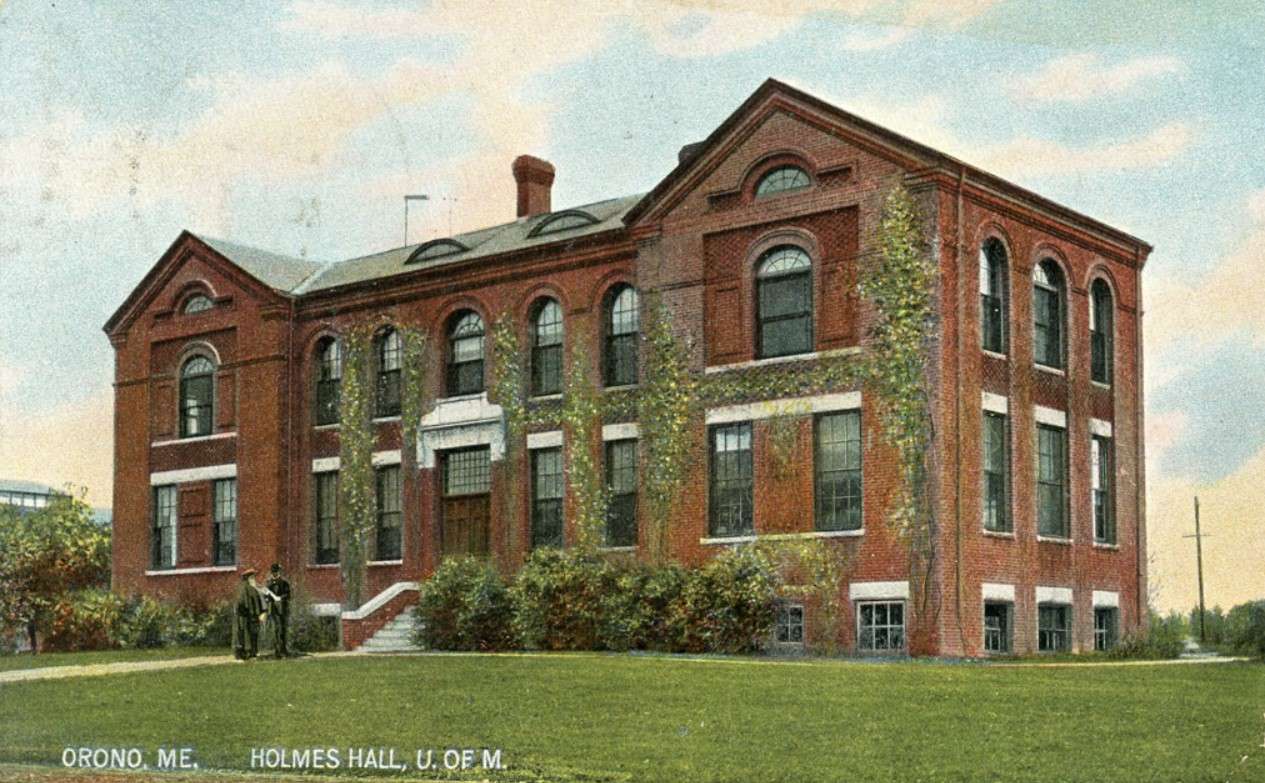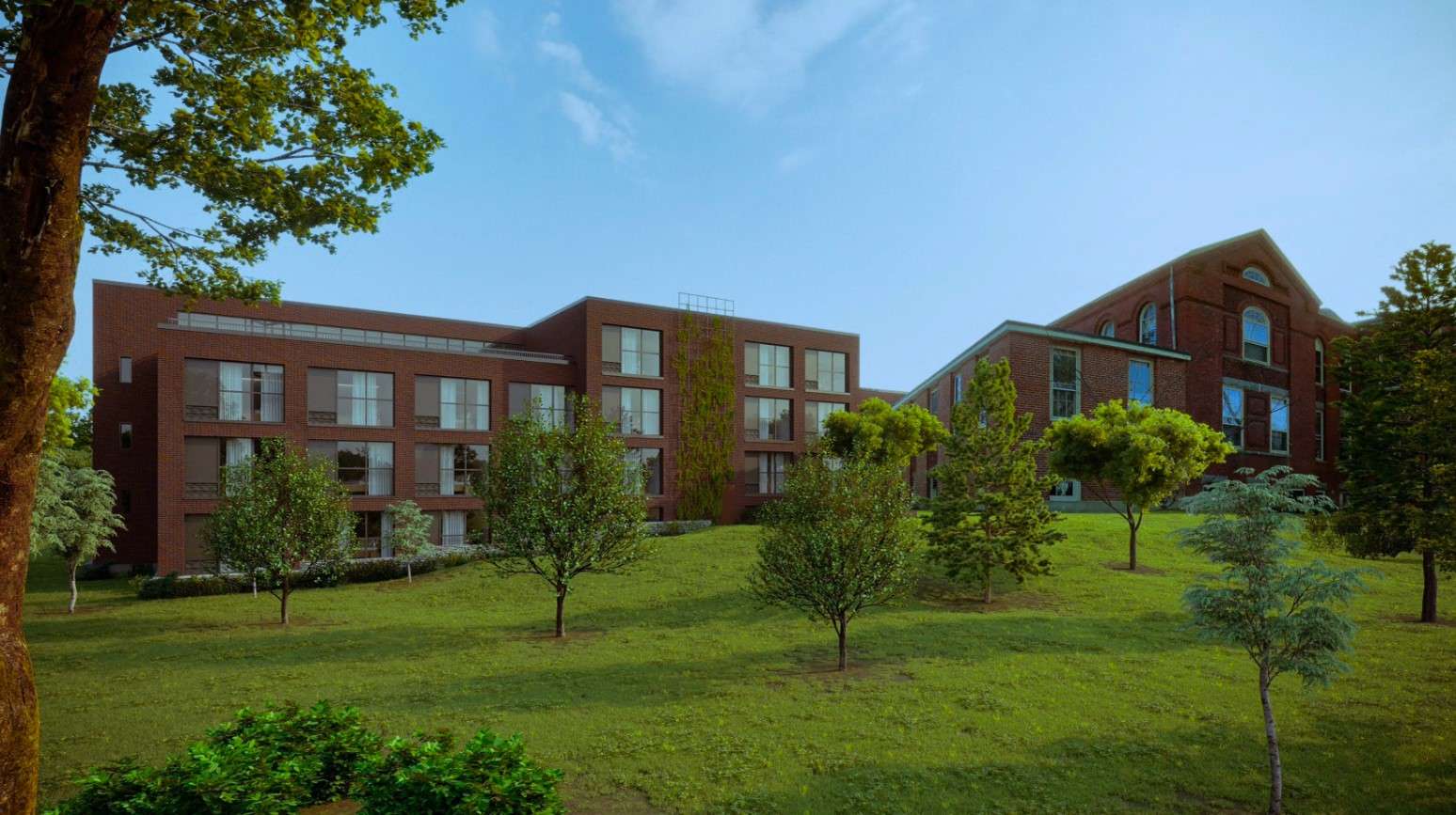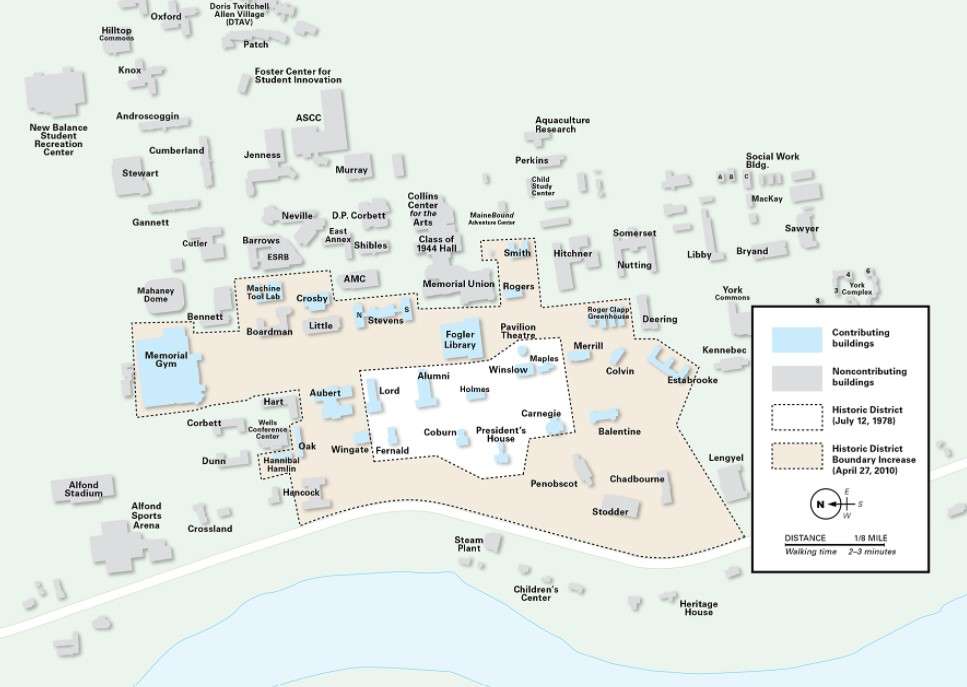
History in the making: UMaine mulls $17M plan to convert iconic buildings into campus hotel
 Courtesy / University of Maine
Coburn Hall, on the University of Maine campus in Orono, is one of two 133-year-old buildings there proposed to become a boutique hotel.
Courtesy / University of Maine
Coburn Hall, on the University of Maine campus in Orono, is one of two 133-year-old buildings there proposed to become a boutique hotel.
Two of the oldest buildings on the University of Maine campus in Orono will undergo a $17 million transformation to become an 87-room boutique hotel, if school trustees OK the project later this month.
A proposal calls for the University of Maine System to partner with a Pennsylvania-based developer to retrofit Coburn Hall and Holmes Hall, which currently stand vacant within yards of each other, and to construct an addition for Holmes.
Radnor Property Group LLC would lead the project, which is slated to begin as soon as September and break ground in February 2022. The hotel would open in the summer of 2023, according to a UMaine System memo.
A board of trustees committee will consider the tentative deal at a July 12 meeting and make recommendations to the full board for a decision on July 26. If the public-private partnership goes forward, UMS could be responsible for up to $2 million of the estimated $17.2 million project costs.
While Coburn and Holmes halls each date to 1888, the project would be historic for another reason.
“This is the first time UMaine has entered into the hospitality industry, more specifically hotel lodging,” spokeswoman Margaret Nagle told Mainebiz on Tuesday.

The cost of history
Coburn Hall and Holmes Hall were built 20 years after the university — then known as Maine State College of Agriculture and the Mechanic Arts — enrolled its first students. Coburn originally housed the school’s agriculture and natural history departments, while Holmes contained labs for agricultural experiments and soon became home to the chemistry department.
Both halls display the Romanesque architectural style of the time, and in 1978 were among 10 UMaine buildings designated a historic district by the National Register of Historic Places.
In recent years the buildings, which together offer 33,000 square feet of space, have been empty or barely used. While the structures are solid, the university has said, safety and accessibility code problems make Coburn and Holmes unsuitable for occupancy.
Meanwhile, their expenses are racking up. UMaine is paying $100,000 a year simply to heat the buildings, and deferred maintenance costs now total $10 million to $12 million, Nagle said.
The UMS trustees began looking in 2019 for ways to repurpose the properties, and hired a Washington, D.C.-based consulting firm, Brailsford & Dunlavey, to help. After reviewing a variety of options for private development, including use as commercial office space, the board decided on the creation of a hotel to be financed with the help of historic tax credits. The proposal includes extensive renovations and the 24,800-square-foot addition to Holmes Hall.
In its September 2020 recommendations, Brailsford & Dunlavey said the on-campus hotel could fetch average rates as much as $133 a night, with an average occupancy of 60%. That’s more than the going price for a room in the Orono-Bangor market, but the firm believes the rate is realistic.
Despite uncertainty created by the pandemic, the report said, the new hotel would address market demand as well as the university’s own demand — created by on-campus sports events, concerts, conferences and the like.
In the first year, the consultants predict the hotel would generate a $30,000 profit, which would be the initial rent due UMS in the project’s proposed 99-year lease to Radnor.
“Various University and community stakeholders demonstrated a need for an upscale hotel development in Orono, which solidifies a boutique hotel development as a strong concept,” Brailsford & Dunlavey wrote in its report.
Two hotels, Black Bear Inn and University Inn Academic Suites, currently provide a total of 116 economy-class rooms in Orono, the consultants noted. University Inn, the nearest of the two properties to campus, is a half-mile away.
College craze
College towns like Orono have long offered modest lodgings designed to accommodate students’ parents and other campus visitors. But academic burbs are fast becoming hotel hotspots, and the schools are eager to get in on the action.
Amherst, Swarthmore and Villanova colleges have all opened upscale hotels recently. In Maine, Colby College is preparing to open the $26 million, 53-room Lockwood Hotel on downtown Waterville property the school bought in 2015.
“New hotel offerings in college towns have never been more appealing and attuned to their locations,” wrote Andrew Sessa of Bloomberg News in September 2019. “Whether owned by the colleges and universities or by boutique brands designed for this purpose, these hotels … do it all in a way that’s proving to be big business.”

Since Sessa’s article, of course, the pandemic has devastated the hospitality industry, at least temporarily. But research has shown college-targeted properties fare better than other lodging establishments during economic hard times.
One example is the growth of Graduate Hotels, an academic boutique brand that launched in 2014. Within five years, Graduate grew to include 19 hotels in locations near schools including Yale, Ohio State and the U.S. Naval Academy. Today, Graduate has 32 hotels, including two in England.
It’s too early to say if UMaine will approve the agreement to develop its own entrant in the campus hotel sector, or how it would be branded and developed creatively.
Nagle said there have been discussions about a potential name, although no decisions. It's likely, however, that the developer will “incorporate some of the artifacts that are currently still in the building to be included in the design elements," she added.
History is unpredictable, though, and it’s worth noting the outcome of a previous brush between the University of Maine System and the hotel industry.
In 1988, the University of Southern Maine purchased the former Best Western Executive Inn, on Congress Street in downtown Portland. USM converted the hotel to become a student residence, dubbed Portland Hall, but sold the property in 2008. The following year it was partially demolished and rebuilt as a mixed-use complex.

Mainebiz web partners
This is a wonderful way to repurpose two beautiful but underutilized buildings. As an alumnus who returns often, I fully support this creative solution to solve a long-standing need. I can’t wait to book my first stay. Keep up the great work!
What an absolutely horrid idea! I loved classes in Coburn. Coburn and Holmes, the spruce trees and green space around them are the heart and soul of the UMaine experience.













2 Comments